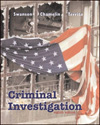The term"sex-related offenses" covers a broad category of specific acts against adults, children, males and females. Rape or sexual battery is legally defined as the crime fo a person’s having sexual relations with another person under the following circumstances: (1) against the person’s consent, (2) while the person is unconscious, (3) while the person is under the influence of alcohol or drugs, (4) if the person if feeble-minded or insane, and (5) if the person is a child who is under the age of consent as fixed by statute. This chapter focuses primarily on sexual assaults that are typically directed toward postpubescent and adult females. Sex offenses in general are classified into several categories, such as serious, nuisance, and mutual consent. Various types of sexual murders including their dynamics, homicidal patterns, and suspect profiles are also discussed in this chapter. In addition, the chapter provides very specific recommendations on how to conduct criminal investigations that are sexual in nature. The investigation and interview of a sexual assault victim can be one of the most delicate and challenging tasks for the criminal investigator. The investigator must obtain all the necessary information yet, at the same time, do so with respect and concern for the traumatic event the victim has just experienced. It is absolutely imperative that the investigator does not in any way pass judgment on the victim that results in revictimization. The chapter also outlines and discusses the considerable amount of physical evidence that is often available when sex crimes are committed. Recently, the issue of drug-facilitated sexual assault, particularly the use of Rohypnol and GHB has received much attention. Investigating this type of sexual assault is unique in that the drugs can be slipped into drinks of unsuspecting victims, the victim often experiences a loss of consciousness and therefore cannot recall the assault, and the drugs are only traceable in the person’s blood or urine for a limited amount of time. The effects of these drugs and the investigative procedures used for this type of sexual assault are addressed. The chapter concludes with a discussion of sexual asphyxia or autoerotic death, and a description of psychological autopsies. |



 2002 McGraw-Hill Higher Education
2002 McGraw-Hill Higher Education